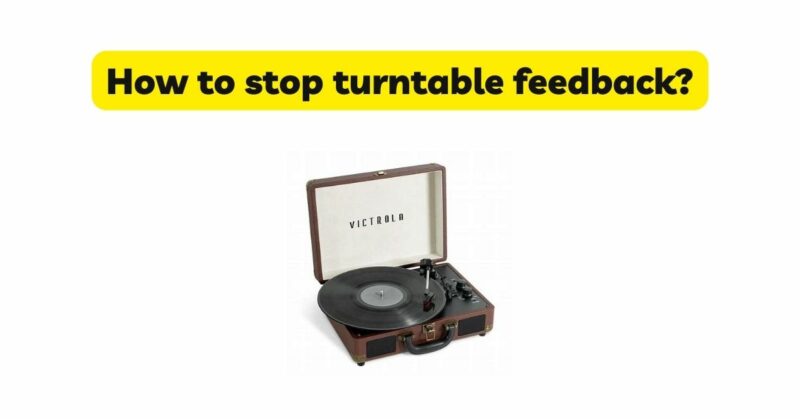Turntable feedback is a common issue that can significantly hinder your vinyl listening experience. The unwanted buzzing or humming noise caused by feedback can be frustrating and distracting. Fortunately, there are several effective strategies to address and eliminate turntable feedback. In this article, we will explore various techniques and tips to help you enjoy your vinyl records without the interference of feedback.
- Understanding Turntable Feedback: Turntable feedback occurs when vibrations from the speakers or external sources are picked up by the turntable’s cartridge and transmitted back into the system, causing an audible loop. This feedback loop can manifest as a low-frequency hum or a high-pitched squeal. It is crucial to identify and address the sources of feedback to achieve optimal sound quality.
- Proper Turntable Placement: The placement of your turntable plays a significant role in minimizing feedback. Here are some key considerations:
- Isolation: Place your turntable on a stable and vibration-resistant surface. Avoid placing it on the same surface as speakers or subwoofers to minimize vibrations.
- Leveling: Ensure that your turntable is level to prevent tracking issues and reduce the risk of feedback.
- Distance from Speakers: Position your turntable at a reasonable distance from speakers to minimize the chances of vibrations being picked up by the cartridge.
- Isolating the Turntable: Isolating your turntable from external vibrations is an effective method to reduce feedback. Consider the following techniques:
- Isolation Feet: Invest in isolation feet or pads designed to absorb vibrations and provide a stable platform for your turntable.
- Isolation Platforms: Place your turntable on an isolation platform or shelf to further dampen vibrations and minimize feedback.
- Addressing Grounding Issues: Proper grounding is crucial in minimizing turntable feedback. Here are some steps to address grounding issues:
- Check Ground Wire: Ensure that the ground wire from your turntable is securely connected to the appropriate grounding terminal on your amplifier or receiver.
- Separate Grounding: In some cases, separating the turntable’s ground wire from other audio equipment can prevent ground loops, reducing the likelihood of feedback.
- Managing Speaker Placement: Speaker placement can have a significant impact on turntable feedback. Consider the following tips:
- Speaker Positioning: Position speakers at an optimal distance from the turntable to minimize vibrations transmitted to the cartridge.
- Acoustic Treatment: Implement acoustic treatment in your listening room to reduce unwanted reflections and resonances that can contribute to feedback.
- Cartridge and Tonearm Setup: Proper setup of the cartridge and tonearm can also help minimize feedback. Consider the following:
- Tracking Force: Ensure that the tracking force of the tonearm is properly set according to the manufacturer’s recommendations. Incorrect tracking force can lead to increased feedback.
- Alignment: Proper alignment of the cartridge can prevent excessive needle movement and reduce the risk of feedback.
- Shielding and Cabling: Cabling and shielding can play a significant role in reducing interference and feedback. Consider the following:
- Shielded Cables: Use high-quality, shielded cables for connections between the turntable, amplifier, and speakers to minimize electromagnetic interference.
- Separation: Keep audio cables separated from power cables to reduce the chances of interference and potential feedback.
- Feedback Eliminators: In cases where feedback persists despite other efforts, you can consider using dedicated feedback eliminators. These devices are designed to detect and eliminate feedback frequencies in real-time, ensuring a clean and noise-free audio signal.
- Professional Assistance: If all else fails or if you are unsure about addressing feedback issues, seeking professional assistance from audio technicians or turntable experts can provide valuable insights and solutions tailored to your specific setup.
Conclusion: Turntable feedback can be a frustrating issue, but with the right techniques and strategies, it can be effectively eliminated. By implementing proper turntable placement, addressing grounding issues, managing speaker placement, optimizing cartridge and tonearm setup, considering shielding and cabling, and utilizing feedback eliminators if needed, you can enjoy your vinyl records without the annoyance of feedback. Experimentation and patience are key in finding the most effective solutions for your unique setup. With a little effort and attention to detail, you can create an optimal listening environment that allows you to fully immerse yourself in the captivating world of vinyl music.


